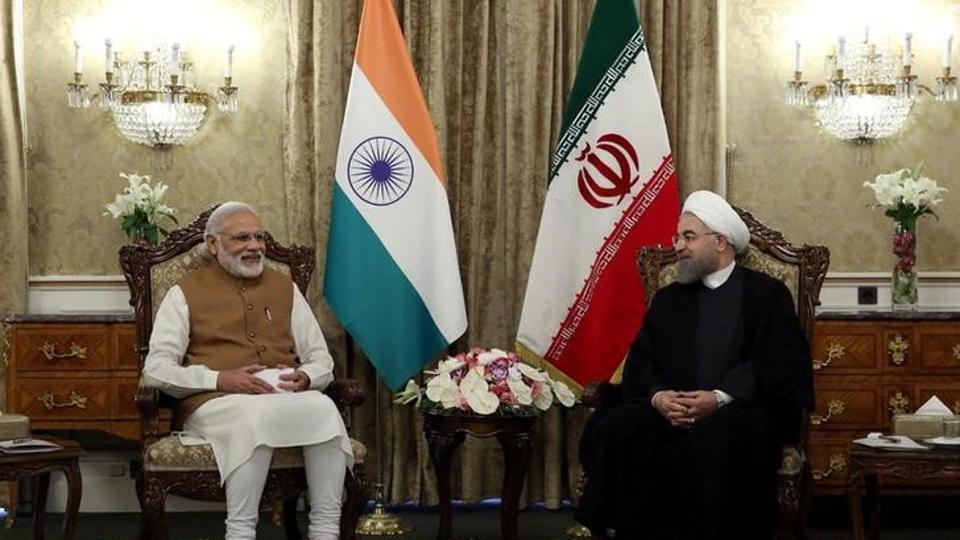
RNA - What makes Iranian president’s India trip significant is the timing arranged by the Indian government. The visit comes in a situation that the US administration is going to great lengths to put as much as strains on the Islamic Republic of Iran on the global stage. Therefore, the invitation of the Iranian president for a visit by Narendra Modi indicates that the Indian Prime Minister is somehow brushing aside Washington’s Iran-related restrictive policies.
Regardless the political aspect, the top priority of the Iranian president’s visit will be boosting economic cooperation. After China, India is the second largest market for the Iranian oil. New Delhi imports some 450,000 oil barrels per day from the Islamic Republic. This is important as we know that India addresses its energy needs by buying 80 percent of hydrocarbons from outside.
According to figures, within three quarters of 2017, India purchased some 20 million tons of oil from Iran. The Indian economy is rapidly growing and so is its need for persistent energy supply. This factor very well justifies the New Delhi’s strategy to expand ties with Tehran despite sheer discontentment of Washington leaders.
Another goal of the trip is pushing ahead the project to pass the Iranian gas to India through Pakistan. In the meantime, Russia’s Rosneft has announced that it was ready to invest in and make operational the strategic gas pipeline. The subsidiaries of Rosneft operating in the Indian energy sector have designed an ambitious program that includes investing $30 billion in India’s petrochemical and oil refinery, and other related projects. The Iranian gas can mainly feed the Indian projects operated by the Russian company. Once this project is operational, the Iranian strategic depth will expand and the American threats and sanctions will be less effective.
Another important aim of the trip has to do with the use of the national currencies in the mutual Indian-Iranian trade, as well as the attraction of the Indian investment in the oil and transportation sectors in the upcoming years. According to Asia Times website, Iran and Russia have agreed to facilitate national currency trade payment by the end of 2018. India is interested in joining the Iranian-Russian plan which will allow New Delhi make payments in the rupee.
According to Alwaght, another aim serves the Indian interests. The New Delhi leaders are struggling to access the Central Asian markets using Iran links. Currently, India has gotten access to the Afghan markets using Chabahar Port in southeastern Iran. Last month, India joined the Ashgabat agreement is a multimodal transport agreement between India, Iran, Kazakhstan, Oman, Pakistan, Turkmenistan and Uzbekistan for creating an international transport and transit corridor facilitating transportation of goods between Central Asia and the Persian Gulf and also facilitation of regional cooperation. According to Indian strategic calculations, Iran is the hub of his regional corridor due to its unique geographical position.
Still, President Rouhani’s visit goes beyond being a simple mutual event. His invitation can signal a change in the course of the Indian foreign policy. Since his assumption of power in 2014, PM Modi preserved and expanded close relations with the US in competition with China in a bid to strike a kind of balance with India’s strong northern neighbor. When it came to ties with Iran, India maintained a conservative policy, taking into consideration the US sensitivity to the partnership with Tehran.
Iran has persistently sought close relations with India, especially since the US-pushed international sanctions that targeted Iran’s oil exports. New Delhi, on the other side, has always tried to preserve its growing relations with Tehran, but has always been inside the US orbit to benefit from strategic closeness to it in areas such as nuclear energy, modern technologies, and investment. Despite that, India and Iran have many reasons to improve relations. Traditional convergence in Afghanistan, joint interests coming from fighting terrorism and radicalism, energy cooperation, membership of the Ashgabat transport agreement, and increasing trade volume all are the important drives behind Iranian president’s trip to India.
847/940